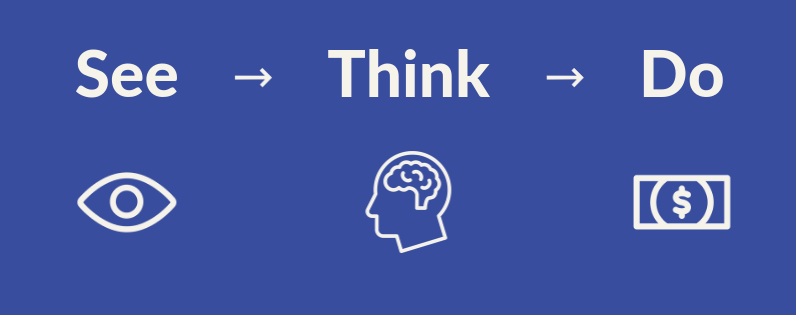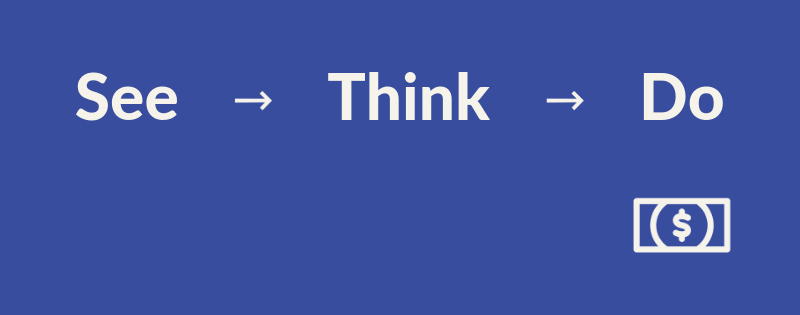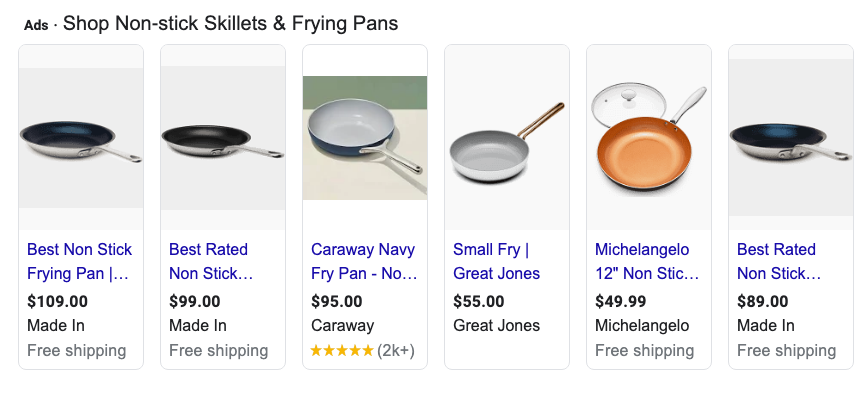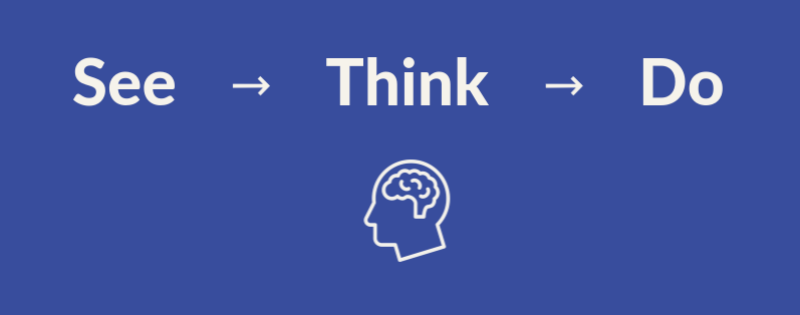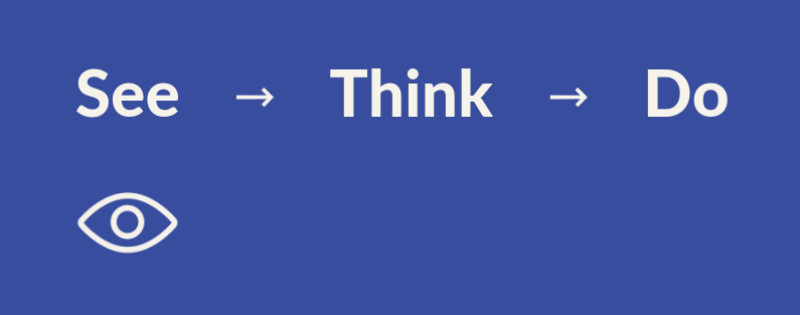The promise of Google Ads sounds great.
Create ads that bring buyers to your online store.
But it’s only when you start that you discover how hard it actually is to generate profits with Google Ads.
If you navigate past the sneaky defaults that Google has in place, you’ll face tough competition which drives up cost and punishes every mistake.
To deal with these challenges, and stand a chance of actually making money, you need a plan.
To get good results from Google Ads you need to start with your strategy: who are your customers and how are you going to reach them.
In this article, I’ll show you how to think more strategically about Google Ads. More specifically how you can use the different types of advertising on the Google Ads platform to win for YOUR business.
The Playing Field
Google Ads is a big platform. So knowing where to play means figuring out which campaign types you’ll be using.
There are four main campaign types: Search, Shopping, Display & Video campaigns.
Most people have a preference for one over the other. Maybe they’ve used it before or they find that one delivers better results.
While it’s good to use any skills that you have acquired before, it might not be the best place to start. Each of the campaign types can work for your business if you approach them the right way.
That’s because all these campaigns can reach buyers at different stages of the funnel.
To map that funnel, I use a framework created by analytics mastermind Avinash Kaushik.
I like it because it keeps things simple while showing the various consideration stages:
- See – people are unaware of the problem & your solution
- Think – people are aware of the problem & comparing solution
- Do – people are actively looking to purchase
It can be used to map out all of your marketing activities, but in this article, I’ll use it for Google Ads specifically.
Let’s see what that looks like.
1. The Do Stage
Instead of starting with the first part of the funnel, the See stage, I usually focus with new clients on the Do stage first.
That’s because visitors in this stage are closest to the money. They know they want/need something, have done their research (however brief) and are looking to purchase. They just aren’t sure who to buy from yet.
Goal
Generate sales.
Targeting
You can reach these visitors by looking at who shows the highest purchase intent.
Thus can be done by focusing on the search queries that are likely to convert, like product searches, or on interesting behavior like browsing products on your site.
Creative
You can be pretty direct in your messaging. These people already know what they want to buy, your job is convincing them to buy from you. This means you can send them directly to your product and category pages to generate sales.
A great analogy for this Do stage is that you’re harvesting the demand that was created by other means.
But that doesn’t mean that just showing up with ads is sufficient. There are plenty of things that can go wrong: price, product, the trustworthiness of the site, shipping costs, delivery time and payment options, etc.
All of these need to be to the customer’s liking before he or she will pull the trigger.
Types of campaigns
Google Shopping campaigns
Google Shopping Ads are as close to the money as you can get. 5-10 products are listed next to each other, allowing for the ultimate comparison.
An additional benefit of this campaign type is that they convert better and cost less compared to regular Search Ads.
And with some extra tweaks, you’re able to target specific search queries, and bid higher for them.
So if you’re running a big brand, you can bid higher if people include your brand name.
If people are searching for specific products that you’re selling, you can choose to bid higher for those compared to others.
Google Search campaigns
With Search campaigns, you can run ads for any keyword you choose. So in order to target visitors that are more likely to convert, you have to identify which search queries they use.
Every store will have its own unique queries that convert. But there are a few types of searches queries that tend to work well across stores:
- Brands
- Products
- Competitors
If you’re unsure where to start, you can start with a Google Shopping campaign, and use the converting search queries to start your first Search Ads campaigns.
A different type of Search campaign is an RLSA campaign. RLSA is short for Remarketing Lists for Search Ads. This is a campaign that ONLY targets people that have been on your site, and are searching again in Google.
It’s recommended you set up a separate campaign if you have a lot of traffic, otherwise, you’re better off using a bid adjustment for website visitors.
Display campaigns
Remarketing campaigns target people that have been on the website before.
There are 2 main types of remarketing campaigns: One is that you design and upload your own ads.
Here is a good example from Harrys:

These ads are labor intensive to produce, but they work quite well from a brand perspective. You keep full control over the creative, colors, logos and copy.
A second type of remarketing is dynamic remarketing. These ads show the product(s) a visitor was looking at.
And instead of creating individual ads per product, Google will pull the info from your product feed to automatically generate the ads.
because these ads feature products that a visitor has looked at before, the effectiveness is a lot higher.
KPIs
Here are the KPIs to evaluate the effectiveness of your campaigns in the Do stage:
- Conversions
- Cost per action (CPA)
- Revenue
- ROAS
- Profit
2. The Think Stage
In this stage, you’re one step removed from the sale. You’ll attract people that know they have a problem or want something but they’re just not sure on the details yet.
Goal
The goal of your ads at this stage is to get potential customers to engage with your brand and site. That could mean checking out your site or even signing up for your newsletter.
This doesn’t mean that you’ll never make sales from these campaigns, but they won’t lead directly to a sale. So if you’re expecting the same results for your investment as in the Do stage, you’ll quickly get frustrated and cut these campaigns.
The conversion rate will be lower compared to the Do campaigns. So to compensate for that, each click should also be cheaper.
Targeting
Your goal is to get people to your site and become part of the consideration set for the product they are looking to buy.
So later when they are ready, your store will be a bit fresher in their mind. That can be because you’re sending them emails or because they see a remarketing banner.
Creative
The type of ads you create in this stage can vary widely.
For search, it still will be pretty straight forward because you put in your ad what people are searching for.
But it gets trickier with Display or YouTube campaigns. The people you’re reaching with those ads aren’t (at that moment) looking for your products.
So a banner or video that says: “Come check out our awesome products” won’t work.
You’ll need to interrupt what they are doing to grab their attention with a different offer or call to action.
And instead of sending traffic to product pages, you need alternative landing pages that will be of interest to your customers.
These are things like buying guides, product comparisons, newsletter signup, wish lists, etc.
Here is what that looks like on a product detail page from Purple:
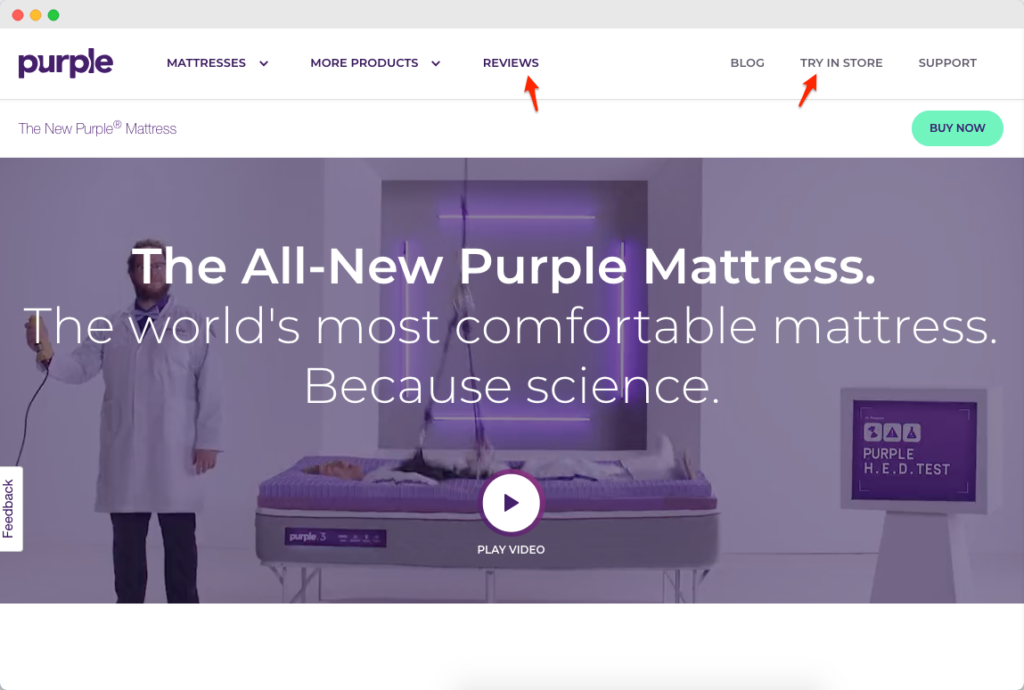
These red arrows in the navigation bar point to things that are key in the Think stage.
The Reviews section can help with that.
The “Try in-store” addresses the most common obstacle in people purchasing something like a mattress online: they want to try it first.
Trying to get visitors to do other things apart from buying might seem backward.
But at this point, you need to match the intent of your customer. If they want to explore all options, and you force them into 1 product, it simply is not going to work.
(This is one of the most common mistakes with Facebook ads.)
Because rather than showing a very commercial message, you’re grabbing the attention of people that might be interested.
Especially if you’ve chosen your placements well, you’ll see good results.
What’s important at this stage is to try and get to the financials as quickly as you can. The traffic volume at the Think stage is a lot higher, so the overall cost of these campaigns can also be higher but that is compensated by the cost per click, which should be lower.
If you can’t convert visitors directly, try to get an idea of what micro conversions are worth to you:
- A new email subscriber
- Someone creating an account in your store
- A visitor sees your buying guide
Types of campaigns
Search campaigns
Unbranded search campaigns target people that show slight purchase intent.
These are searches for the categories, problems or solutions. But these clicks can get expensive. So you need to make sure that your bidding strategy reflects the real value of these visitors.
Examples: “anti-aging cream”, “thin hair” or “vitamins for thin hair”.
The importance here is that you can back up the claim you make in your ads.
If a visitor searches and clicks on your ad that says: “Largest Selection Of Camping Tents. Browse now!” and you only have ONE calf leather, hand stitched $1000, 1-person tent, that visitor isn’t going to engage with your site whatsoever.
Shopping campaigns
Unbranded shopping campaigns work very similar to search. Controlling your Shopping campaigns on a keyword level will also allow you to set correct bids to capture these searches, but not overpay for them.
Unbranded shopping queries can go down to $0.05 – $0.07, so you can attract tons of traffic with this setup.
Display campaigns
With campaigns on the Display Network, you’ll show banners with attractive offers to people on Google’s Network of 3rd party websites.
Here is an example from Outdoor Voices:

Display campaigns have a couple of different options on how to find the perfect audience:
- Google Ads criteria: geography, topics, interests, demographics, affinity, placements, etc.
- Similar audiences: allow you to target people that have similar characteristics with Remarketing audiences that you have in your account
- Customer Match: allows you to upload email lists and target these people. Since these are people familiar with your brand or store, the response rates on these campaigns will be a lot higher.
YouTube campaigns
There are a couple of different YouTube video ad formats, but the basic idea is very similar: create something that’s worth interrupting people for.
This is the biggest hurdle for businesses wanting to start with YouTube ads. because it requires creativity to come up with something good, you can’t phone it in.
Keep in mind that your goal at this stage is to nudge people towards your brand. So it’s not a pure branding campaign (we’ll see that in the next stage) but an ad with a clear call to action.
KPIs
KPIs for the Think stage:
- CTR
- Page depth
- Assisted conversions
3. The See Stage
Welcome to the big leagues!
At this stage, you’re a couple of steps removed from making sales. Heck, people at this stage might not even be thinking about buying something.
Goal
Increase brand awareness amongst your target audience.
Targeting
To hit that goal you need to aim wide.
Even though people might not be looking for something specific, you are building up awareness or building up credit for later.
Since there is no intent you’ll mainly target location, demographic or interest-based criteria.
Creative
The goal here isn’t to sell, it’s to introduce your brand and what you stand for to your customer.
Check out this video from Salomon:
Although a lot of Salomon products are featured in the video, no one is telling you to go out and buy ski equipment.
This is what brand awareness is all about. You try to connect with your customers over a feeling or something very practical.
In this case: connecting skiing with technology, implying that because of things like this they are an innovative brand.
The goal is that by the time the customer is in the market for the products you sell, he or she will consider you or be able to tell you apart from competitors.
There are many benefits to having a strong brand. With Google Search Ads a higher brand affinity translates into higher click-through rates on all your campaigns.
Research by Wordstream revealed that people that see your ad and are familiar with your brand, are 2-3 times as likely to click on your ad vs your competitors.
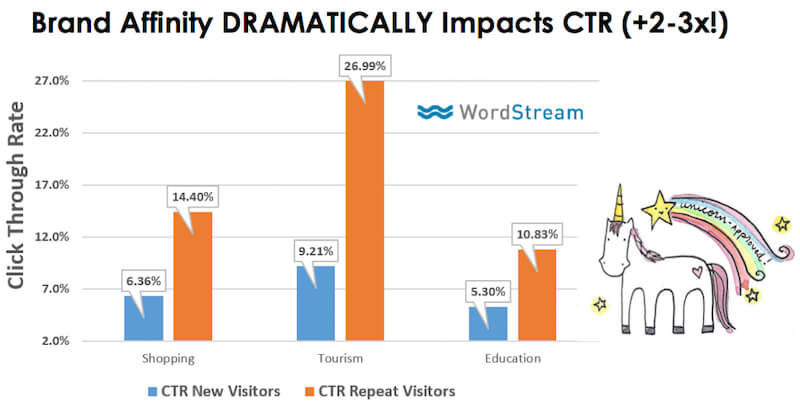
So the investments you make in brand awareness today might result in a much higher CTR in a couple of months or years.
Investing in brand awareness campaigns is a long term play. So before you get started with this stage, you have your business foundations in place, all of the previous stages dialed in and running at a profit.
That’s because to do display and video campaigns right, they need to look good to stand out and make a difference. And that means spending money on production.
Types of campaigns
Display campaigns
This is the first-ever online banner. It’s from 1994 and had a CTR of 78% 😵

How can you achieve these same results today?
You can’t.
What was super effective 24 years ago, performs sub-par today. It’s called The Law of Shitty Clickthrough and it happens consistently with every new medium.
So if people don’t click on your banners why invest in them?
As mentioned above, your banner should make people more familiar with your brand and what you stand for.
I like the ads that Quip has been putting out:
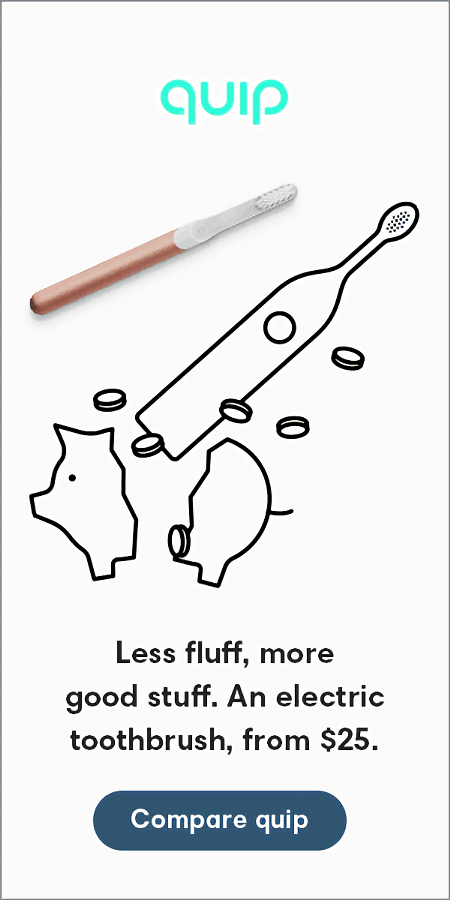
These types of display campaigns can work, but they aren’t easy to execute well. Especially for smaller brands.
YouTube campaigns
So while the relevance of display is fading fast, video advertising is picking up the slack.
The Salomon video shows what you can achieve with a big production budget.
But it also works on a smaller budget, as this ad from Poo Pourri shows:
Or go very low budget:
Most people use YouTube to have a good time or to learn something.
So humor is very effective in creating good videos. Go with what makes you weird and different.
KPIs
You won’t know if you’re succeeding by looking at your sales.
But you are interrupting people with your ads, so one thing you can measure is how effective you are in doing that.
Think of clicks, completed views, # new visits and changes in branded search volume. Even the number of social followers or hashtags used can be valuable to some brands.
If you’ve got a campaign that spends $20k or more, you can use another one of Google Ads’ features called Brand Lift. It’s basically a survey where they test the Ad recall of your ad and brand.
Applying the See-Think-Do Framework
If you’ve followed the breakdown of the different stages, I hope you discovered where you have some gaps in your Google Ads strategy.
Most stores will stick to campaigns in the Do stage, and that’s ok because you’ll spend your budget as efficiently as possible.
But do consider the other types of the campaign as well, they will help you think about the infrastructure (content, creative assets, website features) that will make your business stronger in the long term.
